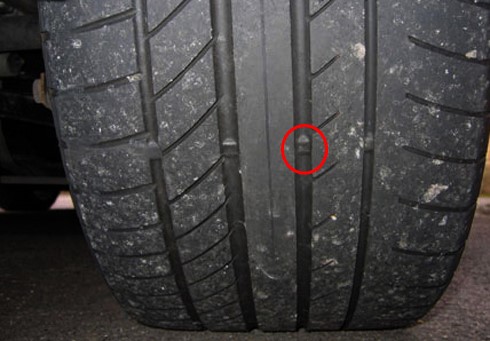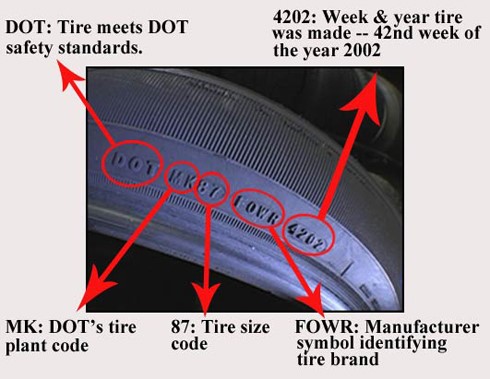Tire is round shaped, hollow, made of various synthetic layers of rubber, steel wire…Outer surface is called tread (talon)
After years in use, tread is eroded. It is thought that it is time to change for a new tire when the rubber inside talong is exposed to the outside. Sometimes it must be changed earlier to avoid deflation occurring on the road and many other troubles, even serious accidents.
If the vehicle normally run about 19,000 – 24,000 km every year, tread will be eroded before the synthetic rubber is degraded. However if it only runs in the weekend for about 10,000 km/year, tire may be degraded before over erosion.
The general Director of Safety Research & Strategies Company has carried out many researches on tire, Mr Sean Kane said. “If you affect a piece of rubber with a force for a period of time, you will see that it is cracked”.
Basically, the similar situation can happen to overinflated tire. Cracks appear on the surface, inside of the tire, rubber is separated from curtain and steel layers. High temperature and pressure will increase speed of degrade. Scientists have added some substances to rubber in order to overcome degrade process. However, it only helps to slow down the process, not totally overcome erosion.
According to Edmunds, agents, tire compaies or rubber manufacturers have different instructions about working life of tire. And U.S Traffic Safety Committee (NHTSA) does not advise to change tire. Nissan và Mercedes consult their customers to change tire every 6 years even the tread is not seriously eroded. Continental and Michelin suggest that a tire can be used in 10 years and it should be checked every 5 years. According to Association of rubber manufacturers, it is impossible to define when we need to change tire because quality of tire depends on various features such as temperature, storage condition and usage.
| |
| 
Tire needs to be changed if it has eroded tread, big cracks or unven inflation. |
Reseach of NHTSA has found that tire degradation process will be faster under high temperature, sunny weather or coastal climate. Despite not working, spare wheel can be degraded because it is usually kept under substructure, exposing to dirt and other external factors. Dan Zielinski, a senior officer of U.S rubber manufacture committee, says that keeping spare tire in a closed box is like putting it into an “oven”.
| |
|  Tire with cracks shows that this tire is degraded. Picture: Evnut. Tire with cracks shows that this tire is degraded. Picture: Evnut.
|
According to Mr.Doug Gervin, sales director of Michelin tire conpany, spare tire does not expose to daylight, however in terms of maintenance technique it is considered to be in use despite the fact that it has not ever worked in reality.
Tire which is kept in garage and not installed will degrade slowlier than spare tire which is full of gas. Different using condition will has different effect to tread erosion. It is undeniable that vehicle just being used on weekend will has tread look better than the daily busy one. Gervin recommend the best way to prolong working life of tire is to maintain its pressure as the manufacturer’s suggestion, regularly turn wheels in case of occationally using the vehicle and conduct periodical check.
| |
|  Finally 4 letters show time of manufacturing. For example, 4202 means that the tire is produced on 42nd week of 2002. Finally 4 letters show time of manufacturing. For example, 4202 means that the tire is produced on 42nd week of 2002.
|
According to U.S Ministry of Traffic, for tires which are produced after 2000, there is a series of characters following DOT in which 4 numbers at the end show time of manufacturing with two initial numbers referring to the week of manufacturing and the other two numbers are the year of manufacturing. For example, there are number 4202; it means that the tire is made on the 42nd week of 2002.
To make right decision for changing tire, drivers not only should consider erosion status of tread but also tire’s age by visual checking. Crack mark, unfixed facbrics or uneven inflation indicate declining quality of the tire, then you should change it.
Theo vnexpress.net